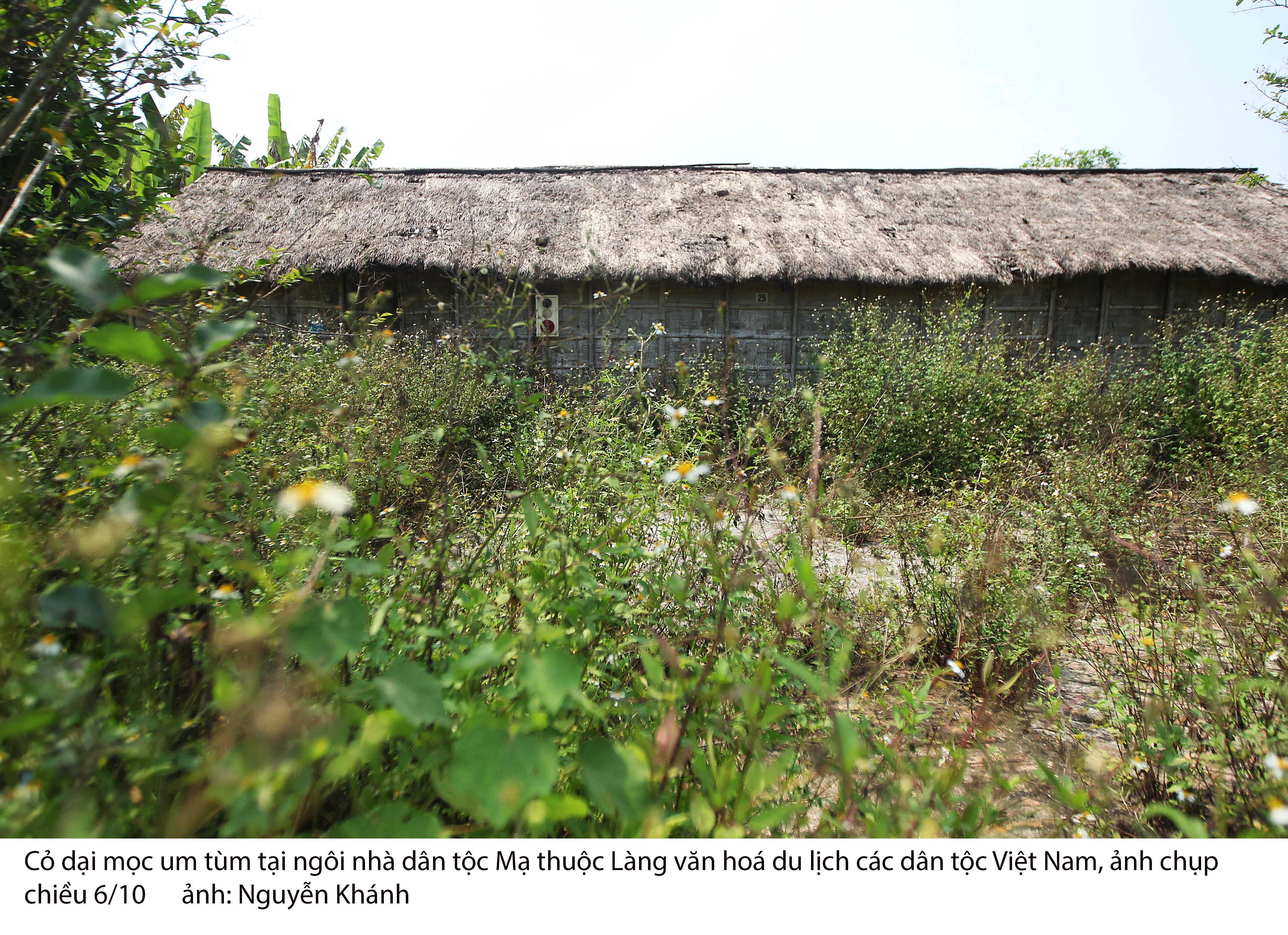A cultural complex representing Vietnam’s 54 ethnic groups has sat derelict since parts of it were opened four years ago in time for the millennial birthday of Hanoi.
A project to build the Vietnam National Villages for Ethnic Culture and Tourism in Son Tay District is estimated to cost VND3.2 trillion (US$150.62 million).
But only one-third of this amount has been disbursed for the construction of the cultural complex so far.
Prime Minister Nguyen Tan Dung has ruled that implementation of the project be finished by 2019.
However, the cultural complex, which sits on a 1,544-hectare land plot, has been neglected since it was inaugurated in October 2010 to commemorate the 1,000th anniversary of Thang Long-Hanoi.
Thang Long (Soaring Dragon) is the former name of the Vietnamese capital city.
The villages are intended to showcase the cultural traits of Vietnam’s 54 races and promote their heritage.
The complex will also serve as a venue for major cultural and sports events on the national scale.
The place currently looks like a wrecked area in the aftermath of a storm.
The wooden and earthen replicas of the ethnic minorities’ houses have sustained serious damage, including peeling flakes of earth, screeching planks of wood and bamboo on the floor, tilting stakes, and collapsing roofs.
Some of the houses are covered with tattered canvases, giving them an even nastier look.
The area is also spoiled with litter, straw, rocks, and electrical wiring.
The doors to all of the houses are invariably shut, leaving visitors unable to take a close look inside without poking their head in through the windows.
Some houses still look good on the outside, but there is nothing inside to re-create the cultural lives of the ethnic communities.
The stale air and dull atmosphere deter visitors even more.
A large part of the houses highlighting the Chut and Cong ethnic minorities were destroyed in a fire last year.
According to workers in the area, the fire which was caused by a short circuit consumed the two houses.
Little remains of the houses other than black stakes and discolored walls, which are now covered with ragged sheets of nylon.
The aisles leading to the Village of Southern Peoples are riddled with sewage, which poses a serious hazard to unwary visitors.
The bathrooms and other auxiliary facilities have not fared any better.
No visitors
Very few visitors are seen at the vast complex, which also features sections containing stone statues from the Truong Sa (Spratly) archipelago, statues crafted by people in the Central Highlands, tomb houses, and a re-creation of a floating market.
Two months ago, a Tuoi Tre (Youth) reporter, who disguised himself as a visitor, saw ten staff members sitting idly outside the management building.
One of them told the reporter to ride his bike straight into the areas he wished to visit, as there was no bike parking lot.
A tour guide told him that the complex only draws visitors during festivals, while it is almost empty the rest of the year.
The reporter returned to the complex on Monday, and little had changed.
According to Toan Thi Huong, a manager of the complex, the facility hosts only three major cultural events annually.
The events are funded by the Ministry of Culture, Sports, and Tourism.
She added that the plan to bring representatives of the ethnic minorities to live in the complex has proved a great challenge due to lack of funds.
The complex’s management only summons them for major events, after which they return home.
Lam Van Khang, vice head of the complex’s management, told Tuoi Tre that as planned, the facilities are being developed and built entirely through state funding.
However, only 30 percent of the earmarked sum has been released since 2010, which has resulted in the delay of many sub-projects at the site, he explained.
Nguyen Dinh Loi, also vice head of the complex’s management board, told Tuoi Tre on Tuesday that one of the challenges the complex has faced is restoring the damaged structures while retaining the unique traits of the ethnic peoples.
He added that many of the construction materials are the original, natural ones used by ethnic groups, so they decay easily.
Loi said that the complex receives few tourists during the hot summer months, when they prefer going to the beach. He added that it “is [only] packed with tourists during major events.”
Like us on Facebook or follow us on Twitter to get the latest news about Vietnam!



















































